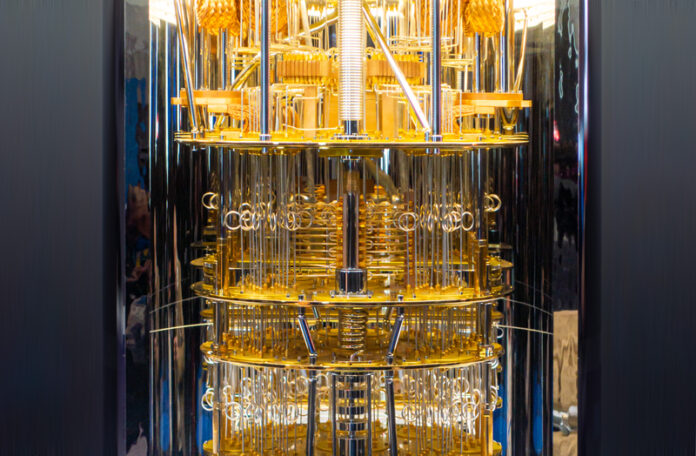Quantum computers powered by qubits, the quantum equivalent to bits and bytes in regular computing don’t work in the same way as conventional computers. They don’t look like them as you can tell by the picture of the IBM Q System One seen in the image above.
Unlike the bits and logic gates with truth tables that define outputs in traditional computers represented as either 0s or 1s, quantum computing’s qubits exist in multiple states that go from 0 to 1 and everything in between. These quantum gates, therefore, can solve problems that classical computer gates cannot including factoring large numbers and simulating complex molecular structures.
Quantum computers also utilize superposition, a fundamental principle of quantum mechanics. Imagine a coin that can be both heads and tails at the same time then you can begin to understand superposition. Carrying on the coin analogy, when we observe a quantum system, although it can be both heads and tails, we only see it as either heads or tails. This makes it very difficult to see what’s going on under the hood. The result, however, is high-speed complex calculations that remain accurate when not subject to outside interference in the form of heat or other external physicalities.
Qubits entangle with other qubits forming co-dependency relationships. For entanglement to work properly, however, external environmental disturbances have to be eliminated. Heat is the one most cited when talking to quantum computer nerds. Hence, the computer’s innards are kept very cold. Just how cold? As close to absolute zero as possible at -273.15 Celsius (-459.67 Fahrenheit).
More recently quantum computer researchers have been able to use their computers at temperatures fractionally higher than absolute zero. Until quantum computers can run in ambient room temperatures they will remain the preserve of big technology companies like IBM and Alphabet and university research laboratories.
Qubits operating at room temperature would be a significant breakthrough. That’s what makes the work being done at Kyushu University in Japan groundbreaking. Back in March 2024, Kyushu researchers in the Faculty of Engineering reported they had achieved quantum coherence at room temperatures that lasted for 100 nanoseconds or 0.0000001 seconds. That doesn’t sound like a lot of time but in the world where quantum physics operates it is.
What is quantum coherence? It refers to a state where photons, which are light particles, interact with each other in waves to create larger more stable waves. Quantum coherence also plays a crucial role in superposition, entanglement, and another phenomenon, quantum tunnelling. The latter term refers to a phenomenon where an electron or atom can pass through a potential energy barrier normally impassable in classical physics.
At Kyushu University, researchers achieved room-temperature quantum coherence using pentacene, a polycyclic aromatic hydrocarbon. Electrons transitioned from a triplet, a measure of their spin rate, to a quintet state while still maintaining entanglement. Before this breakthrough, quantum coherence had only been achieved at near-absolute to absolute zero temperatures.
Although the phenomenon lasted a mere 0.0000001 seconds, the results, stated Nobuhiro Yanai, one of the Kyushu research team, should yield new materials to “open doors to room-temperature molecular quantum computing based on multiple quantum gate control and quantum sensing of various target compounds.”
A paper published in the journal, Science Advances, described the Kyushu discovery as the beginning of a second quantum revolution making it “promising for quantum computing at room temperature and quantum sensing of living systems.”
The illustration that I have included below was used as an illustration by the writers of the paper. It showed how the quantum coherence was observed.










